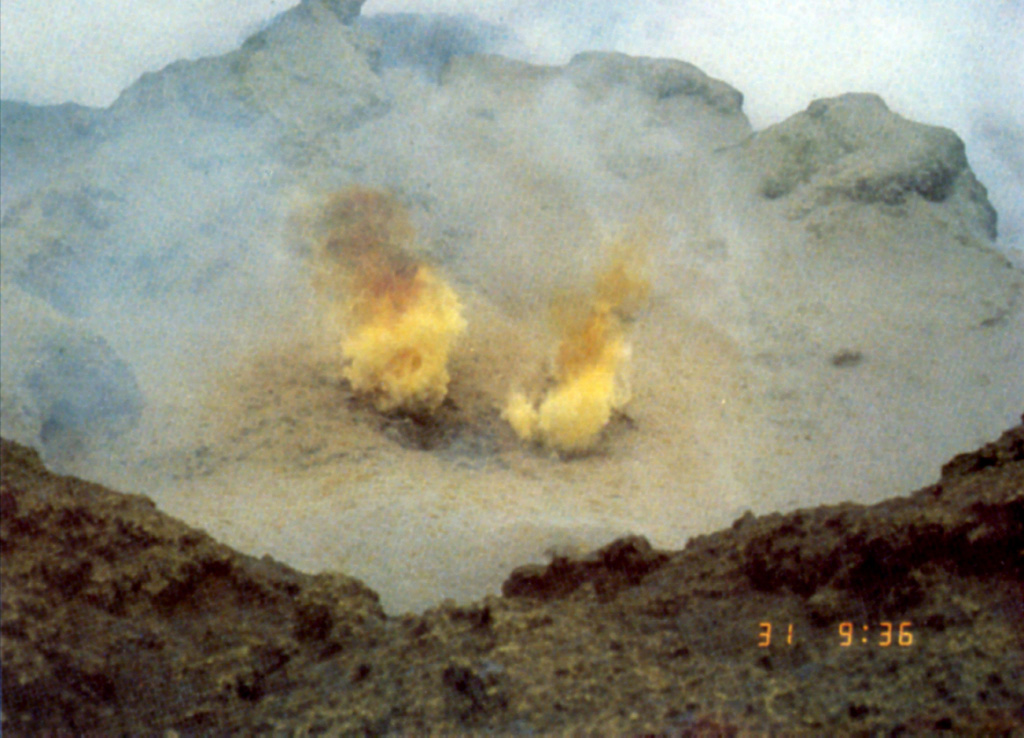Clarifying the Facts Around Poás Volcano’s Activity
Recent social media buzz around Costa Rica’s Poás Volcano suggests dramatic changes in its volcanic activity, specifically concerning the emission of yellow gases. However, this narrative has been refuted by experts, who stress the importance of accurate information and the dangers of misleading reports.
Misleading Images and Expert Clarifications
A photograph circulating across various social media platforms depicts Poás Volcano expelling vivid yellow gases, a spectacle that has raised concerns and piqued public interest. However, Maarten de Moor, a noted volcanologist with the Volcanological and Seismological Observatory of Costa Rica (OVSICORI), has clarified that this image does not align with recent observations. De Moor suggests that the photograph likely dates back to 2017—a year when the volcano’s lake dried up, and sulfur cones and yellow gas emissions were indeed observed.
Further, de Moor noted potential digital alterations to enhance the color in the photo, emphasizing, “It seems that the colors were modified to look much more yellow. I cannot confirm the origin of the photo, but it is not something that we have observed in the latest monitoring.”
The Role of Misinformation in Public Perception
The spread of this outdated or digitally altered image underscores a larger issue with misinformation, especially regarding natural phenomena like volcanic activity, where public safety is at stake. The photo was linked to claims about OVSICORI’s supposed ability to predict volcanic eruptions through the Above project (Aerial Observations of Volcanic Emissions). However, this project, which was actually developed in 2019 for volcanoes in Papua New Guinea to measure magmatic gases using drones, has never been used to predict eruptions and is not active in Costa Rica.
De Moor clarified, “The Above project has never been used to predict an eruption; that’s completely false. Its purpose is aimed at improving knowledge and forecasting to anticipate future eruptions.”
The Complexity of Predicting Eruptions
Predicting a volcanic eruption involves numerous challenges. De Moor explained that obtaining data precise enough to forecast when an eruption will occur, its size, or its impact isn’t straightforward, especially for a volcano as complex as Poás. Since November of the previous year, OVSICORI has noted increased activity at Poás and has been evaluating various possible scenarios, such as the drying up of the Botos Lagoon which could lead to increased ash emissions.
Despite enhanced monitoring efforts and data collection, de Moor emphasized, “These are not akin to a prediction or as simple to state ‘this will happen on this day, at this time, with this magnitude,’ as it’s difficult to estimate.”
Recent Eruptions and National Park Closures
Poás Volcano experienced one of its most significant ash eruptions in the past five years on April 1, with ash columns reaching between 600 and 800 meters above the crater level. Following this activity, there was a decrease in gas emissions, signaling a downward trend in its eruptive phase. Consequently, Poás Volcano National Park was temporarily closed at the beginning of April due to increased activity but reopened on April 13 after conditions were deemed safe.
Navigating Volcanic Facts and Fiction
The case of Poás Volcano highlights the critical need for accurate scientific communication and the potential hazards of misinformation. As Poás continues to be a site of interest for both researchers and tourists, maintaining rigorous scientific oversight and public education will be key in managing interactions with this dynamic natural wonder.

